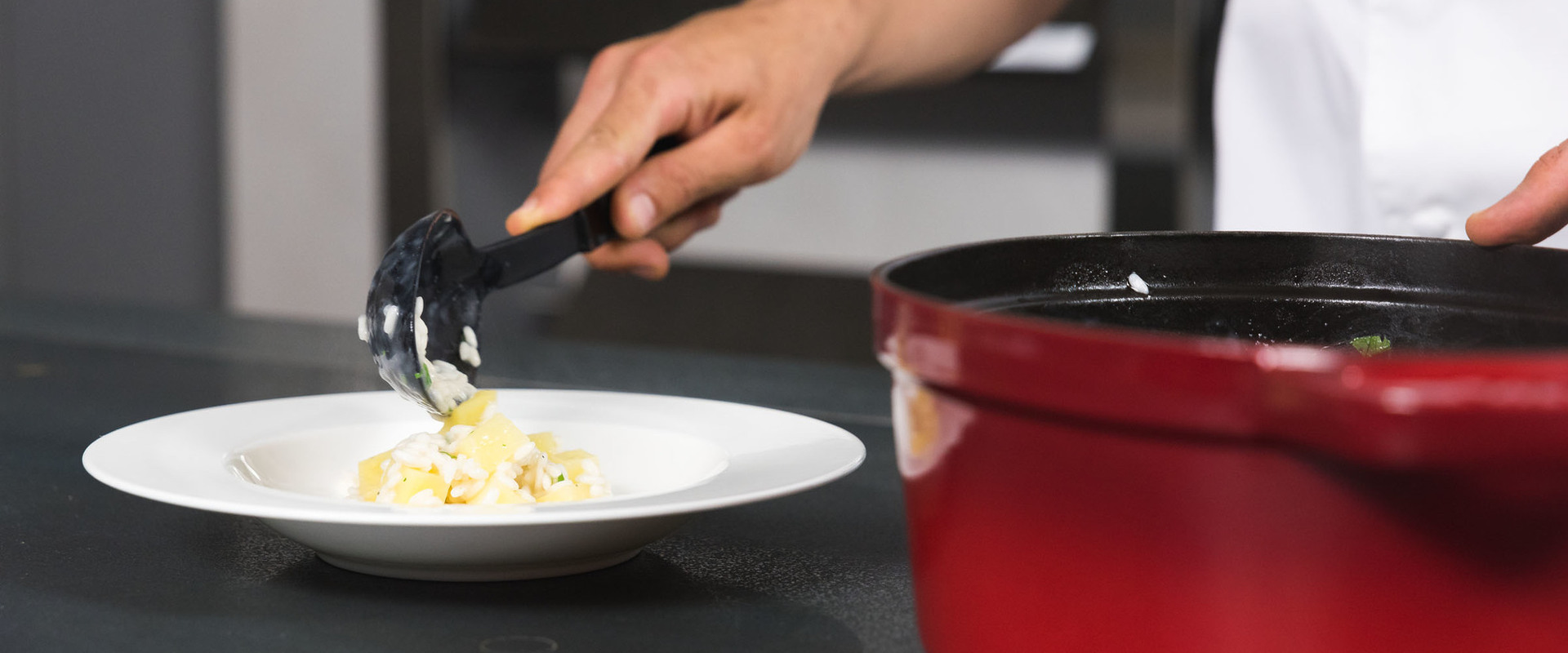Minimalism is a style that became popular in the 1960s in response to an increasingly widespread philosophy of living that aims to simplify everyday life, eliminate the superfluous and focus on the essential.
Minimalism has been expressed in art, music, architecture and design.
In interior design, the style is expressed by assigning a primary role to light: volumes with simple, rigorous lines in a balanced continuum of solids and hollows decorate with light, amplifying our perception of space.
Simplicity and clean geometries freely transform space, with order and balance, allowing infinite potential for imagination and interpretation. Furniture take on the most perfect clean forms, emphasising function and eliminating useless ornamentation.
Minimalism in the kitchen
Kitchen design has become increasingly oriented in this direction over the years, coming up with designs combining a rigorous, linear aesthetic with the utmost practicality.
Base units and wall units with a regular appearance devoid of decoration, top quality materials, carefully thought-out colour combinations (with a definite predilection for white, neutral hues and natural stone), a focus on detail, digital appliances and extremely precise organisation of containing spaces: these are the trends in today’s kitchen designs.
The induction cooker: efficient, safe, beautiful
The forms and materials of the cooker, the heart of the kitchen, have been reinterpreted by all appliance manufacturers in response to all kinds of trends, from the most classic to the most futuristic.
The induction cooker is a response to today’s consumers’ preference for practicality, ergonomics and design: the key concepts inspiring the design of the new kitchen fittings.
The induction cooker has become more and more popular in recent years, thanks in part to media exposure on food programmes filmed in television studios, where induction cookers are the rule to guarantee safety on the set.
In countries like Italy, where electricity is still relatively expensive and cuisine is very traditional, with everything this implies, the induction cooker is still perceived as a novelty, while it has been commonplace for more than 20 years in other countries where gas cookers are not so commonly used.
In actual fact the popularity of this appliance is affected by inaccurate information about its energy consumption.
Today’s power management systems in induction cookers permit much better performance in terms of energy efficiency than conventional cookers or radiating systems: heat dispersion on an induction cooker is limited to 10%.
This means that 90% of the electricity is transformed into heat, while in other cooking systems dispersion is around 50-60%, as we can easily observe when cooking with a gas cooker: the area around the cooker becomes warm.
Digital control units with LCD displays and increasingly intuitive functions permit precise control of temperature and cooking times; moreover, heat is not only emitted evenly, concentrated in the area in contact with the pan made of ferrous material, but is automatically interrupted when the pan is removed from the element; the rest of the surface does not heat up, preventing burns or encrustation of drops or bits of food that fall on the cooker.
The induction cooker is a perfectly smooth surface, with no grids or burners, making it particularly easy to clean.
Induction heating is based on use of electricity to create a strong magnetic field in the cooking area. Electromagnetism triggers motion in the ferrous molecules of the pan, so that they produce heat and transmit it to the food: only the base of the container activates the electromagnetic field, so that only the container heats up, cooking the food contained.
Another consideration worth emphasising is the fact that induction cookers are perfectly ecological: if the home has photovoltaic panels, it will be possible to cook using solar energy alone!
Moreover, it eliminates combustion emissions and the risk of gas leaks.
SapienStone: The definitive expression of minimalist design
SapienStone, a brand that is always attentive to the latest interior design trends and the demands of today’s informed, aware consumers, proposes a cooker 100% Made in Italy, from concept to manufacture, permitting integration of an exclusive TPB ® induction cooker in the same finish as the worktop: the cleanliness of form and uniformity of the material thus creates a surface which is uninterrupted to the sight and to the touch, the embodiment of rigour in colours and materials.
The project was developed and implemented in partnership with TPB® of Spain, which integrated new generation induction cookers with Touch Controls into SapienStone kitchen countertops, transforming the worksurface into a cooker.
The technology makes the most of the technical performance of SapienStone porcelain, allowing the brand to offer the market a high-performance product in terms of both efficiency and aesthetics.
The TPB ® induction cooker is, in fact, perfectly concealed under the worktop, underlining the peculiarity and excellence of the quality porcelain the company makes, which meets the world’s strictest standards for strength, hygiene and durability.
Drawing on the consolidated expertise of the Iris Ceramica Group, a world leader on the ceramic coverings market, SapienStone produces through-coloured porcelain countertops reproducing natural materials with incredible visual and tactile fidelity.
The product of on-going in-depth research, SapienStone countertops are a solution responding to the aesthetic and functional requirements of today’s kitchens: the porcelain used in the countertop and the TPB ® induction cooker is non-absorbent and resistant to high temperatures, blows, scratching, abrasion, acids and corrosive agents, requires only quick, easy maintenance and guarantees the utmost hygiene.
Integration of the induction cooker expands the available workspace: the useable surface area is increased, without interruption, becoming not only a surface on which to put things before cooking, but a true part of the countertop on which to prepare food.
Available 12 or 20 mm thick, SapienStone countertops come in large slabs of through-coloured porcelain measuring 320x150cm, big enough to cover even the largest kitchen surfaces.
Integration of TPB® technology establishes visual continuity in surfaces of incredible aesthetic impact.
The Editors
